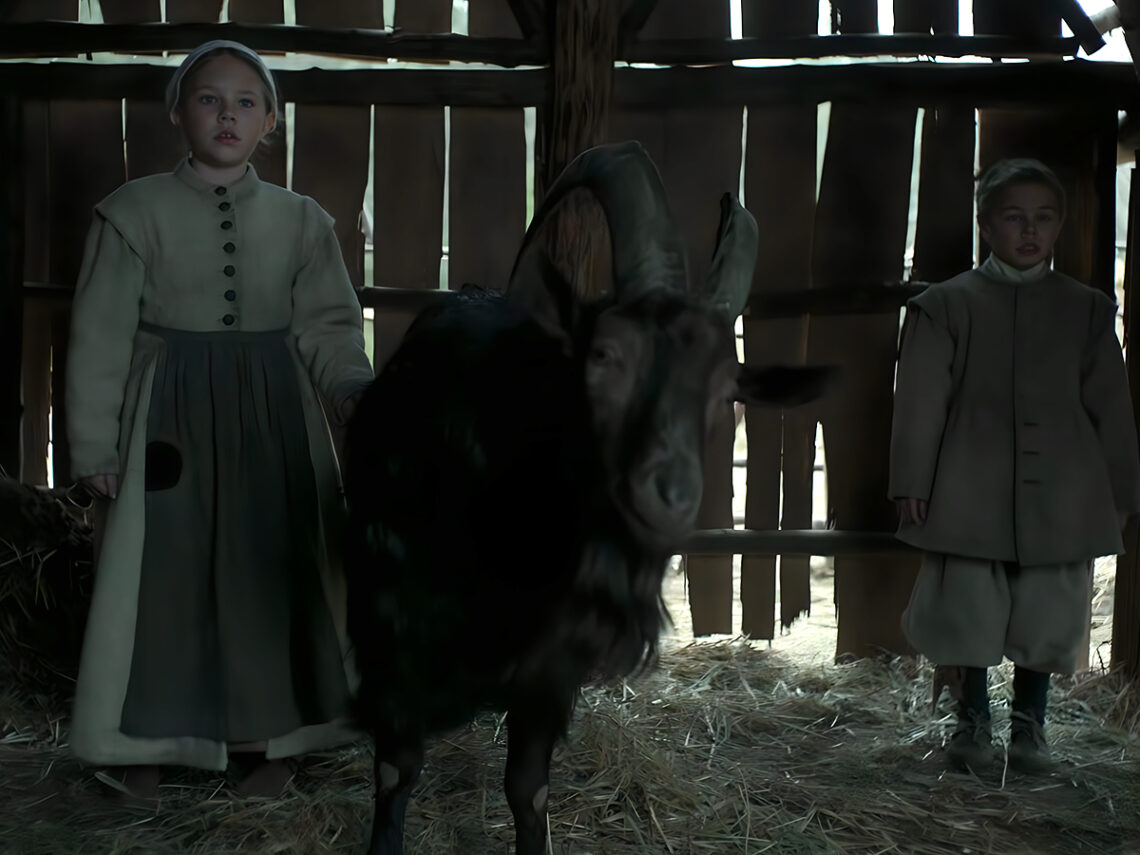Stories about impossibly ill-behaved Hollywood stars are neither new nor rare. Some get to reclaim the narrative using their incredibly skilful PR machinery, while other performers forever have their reputations smeared by being unreasonable difficult on sets. And when it comes to breakout stars who have their newfound stardom go to their heads too soon, you might not think of a goat, but that’s precisely what happened with Black Phillip, the 210-pound billy goat that stole the show in Robert Eggers’ chilling modern horror The Witch. Except this time, there were witnesses to his gory antics.
Black Phillip may have seemed like the epitome of evil on-screen. Not surprisingly, the goat who played Black Phillip, Charlie’s behind-the-scenes antics were just as sinister.
Eggers wanted to keep Black Phillip in the margins of the story, deliberately downplaying the goat’s importance to create a more surprising impact. Anna Kilch, Charlie’s trainer, recalled the day they selected him, speaking to The Hollywood Reporter, “He had the biggest horns. Goats just don’t grow bigger horns than that.” With such impressive physical features, it’s no wonder Charlie cinched the role of Black Phillip.
However, handling this peculiar and unpredictable co-star was no easy task. As director Eggers revealed, Black Phillip had a mind of his own when it came to following the script. “If we wanted him to be doing something violent, he wanted to go to sleep. If he was supposed to be standing still, he was running around like a madman.” Thankfully, Louise Ford, the film’s editor, played a crucial role in piecing together the usable footage to create Black Phillip’s acclaimed performance.
The real sinister story behind the breakout goat from The Witch
Ralph Ineson, who portrayed the family patriarch in The Witch, had a particularly challenging time dealing with Black Phillip. Ineson had to drop 30 pounds to prepare for his role, which put him at a significant disadvantage when it came to wrestling with the imposing Charlie. As Ineson put it, “He was horrible. Really, really horrible. From the moment we set eyes on each other, it was just kind of hate at first sight.”
Things between the two worsened on the fourth day of the shoot when Charlie rammed his horns into Ineson’s ribs, dislocating a tendon. “Everything hurt,” Ineson remembered. “I spent the rest of the five-week shoot on painkillers.”
The struggles with Charlie became so intense that Eggers had to commission a puppet version of the goat for one particularly violent scene because he wanted to avoid using CGI for such a crucial scene. Ultimately, numerous sequences involving Black Phillip had to be abandoned. However, there was one pivotal scene that couldn’t be compromised upon.
In this particular scene, Black Phillip stood on his hind legs near the creepy twins. It’s worth noting that during this potentially risky scene, the goat was secured with a leash, which was later removed in post-production through digital editing.
Eggers and Ineson may not want to work with Black Phillip again, but Anna Kilch stands by her goat’s performance, insisting that he did the job well, “…we were really happy with him.” Kilch went on, “He was kind of the star of the show, so we ended up using him a lot. Maybe that’s why [they found him difficult]. But no, he was fantastic.”
Ineson was not too keen on Charlie getting so much fanfare, “It’s wonderful that his fantastic performance is bringing notoriety to the film, but there’s a little part of me that’s like, ‘Seriously? That f—er?’”
In the end, Black Phillip became a star in his own right. But Ineson had the last laugh, “There’s an incredible restaurant in London called The Smoking Goat. When Robert [Eggers] was in town, we went there for my wife’s birthday and shared this incredible goat dish. We remembered Charlie. Not so fondly.”
